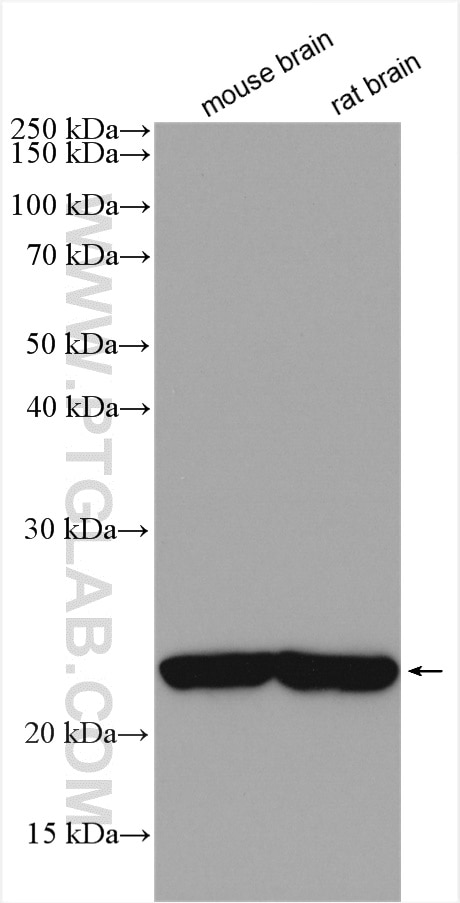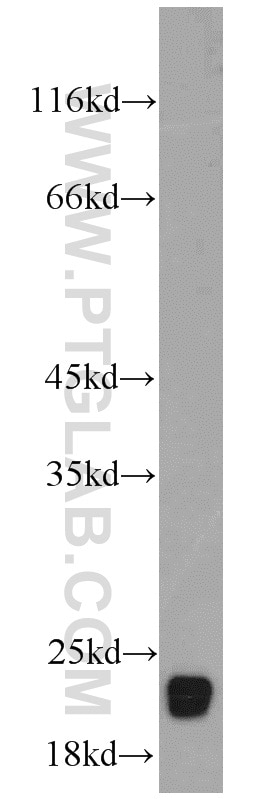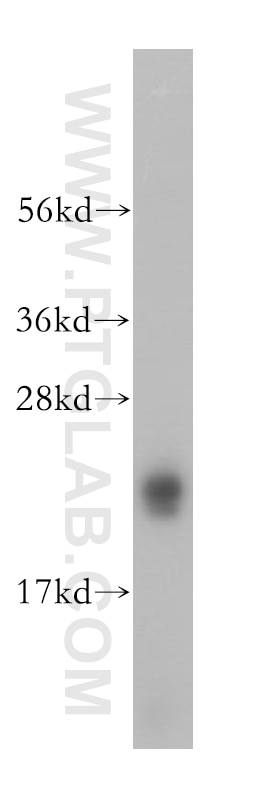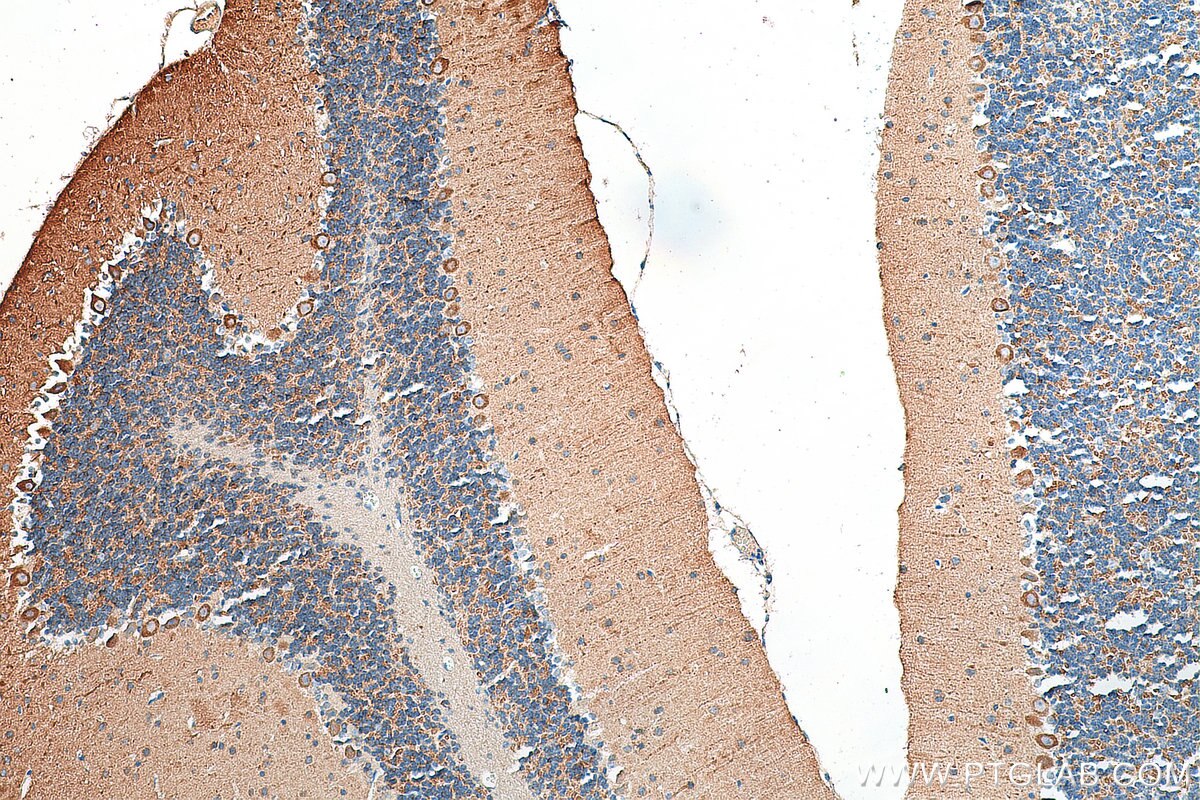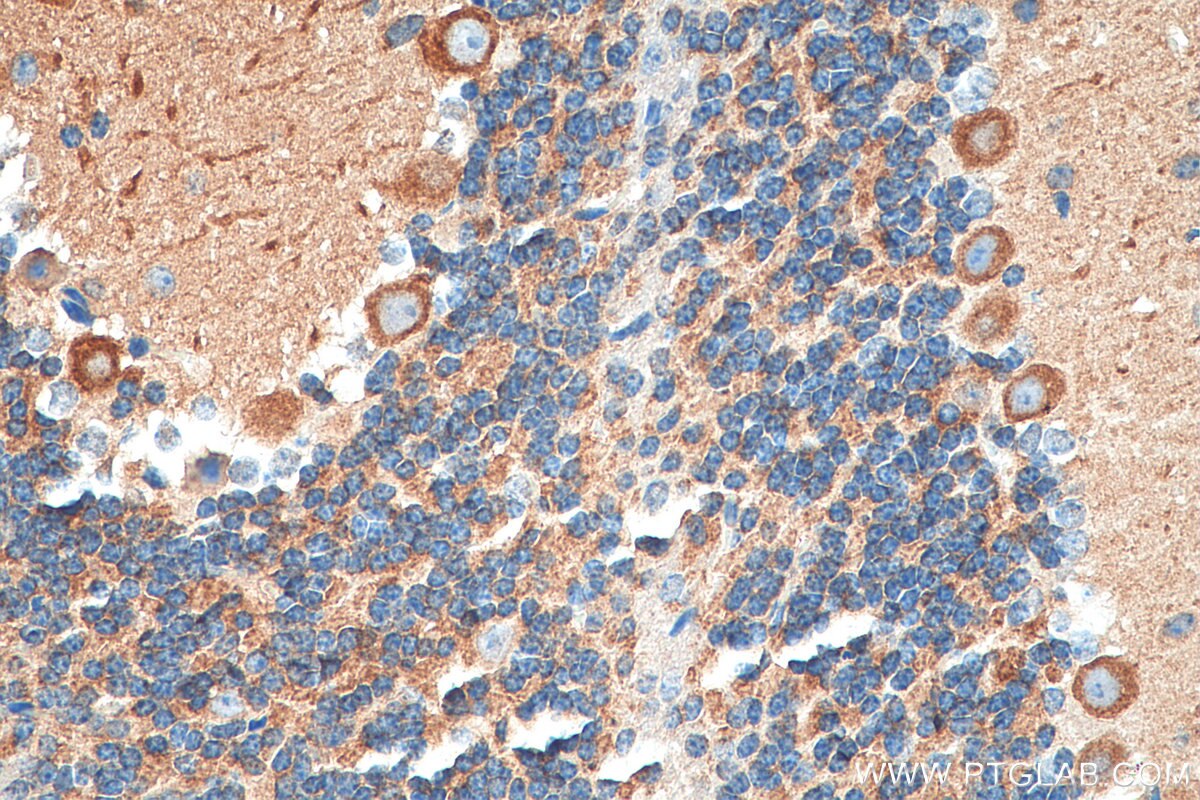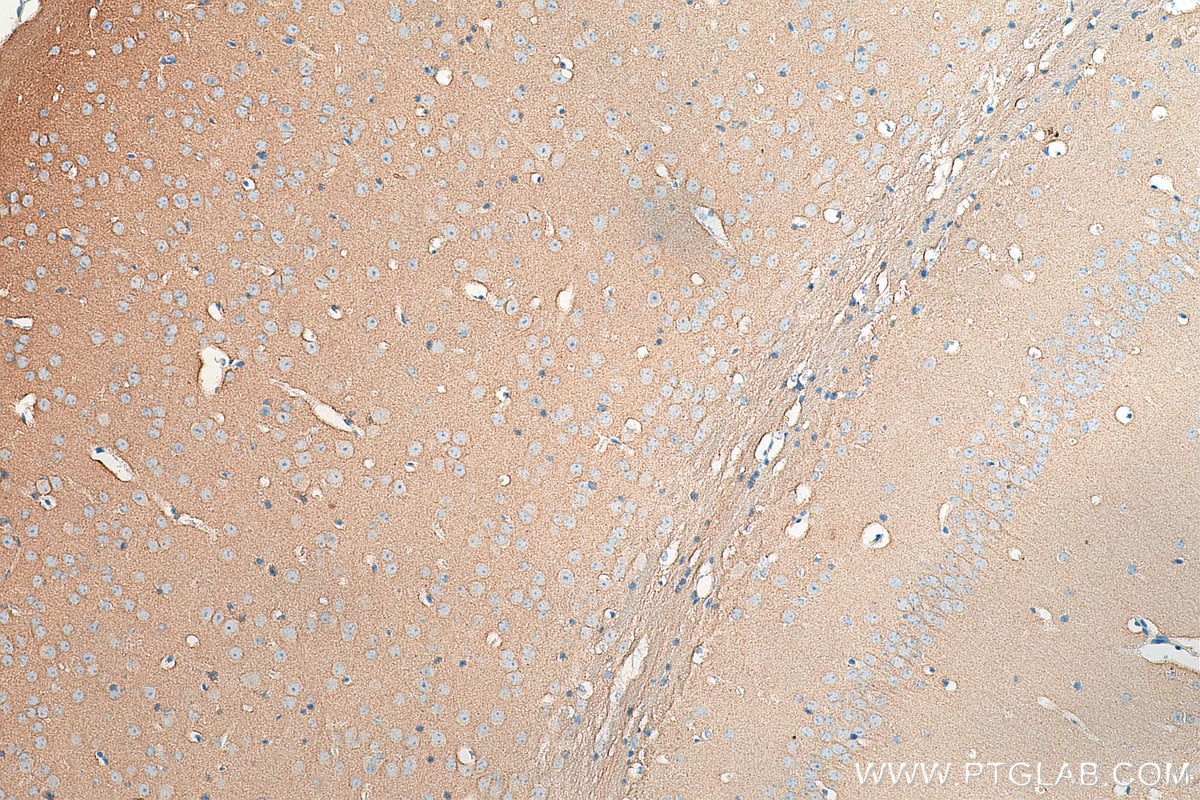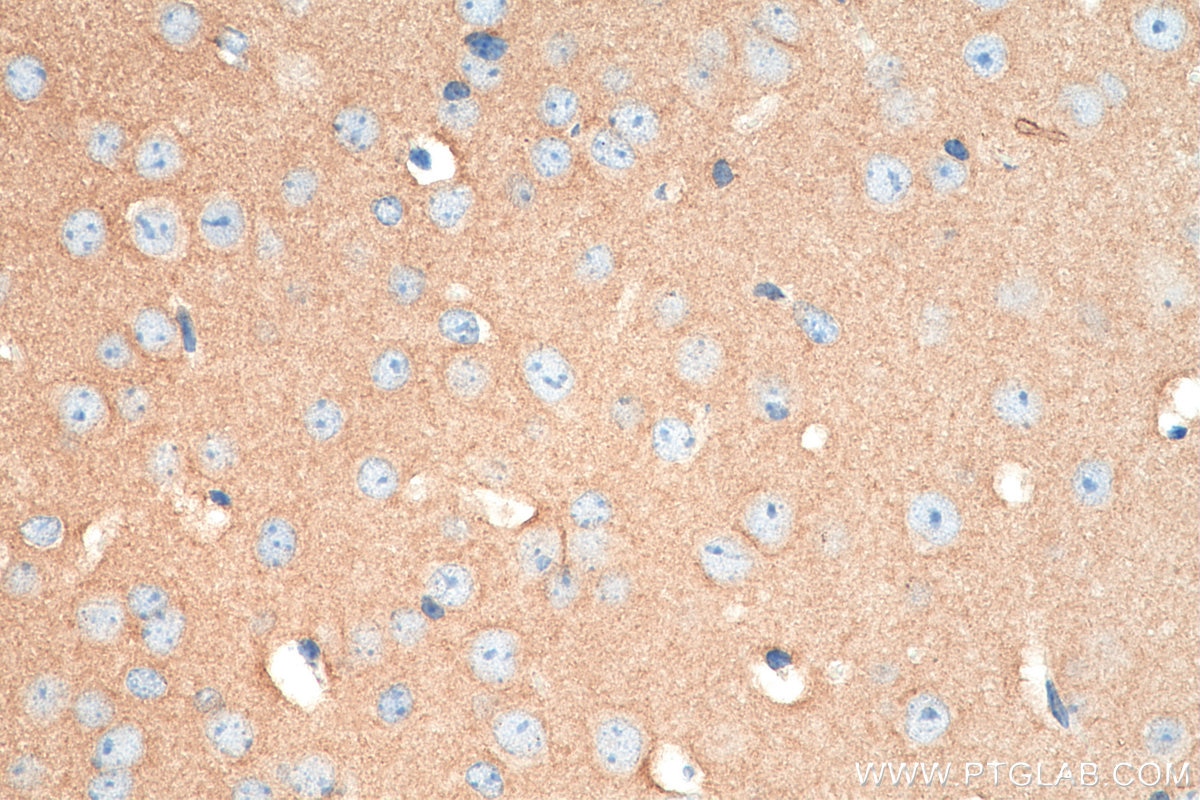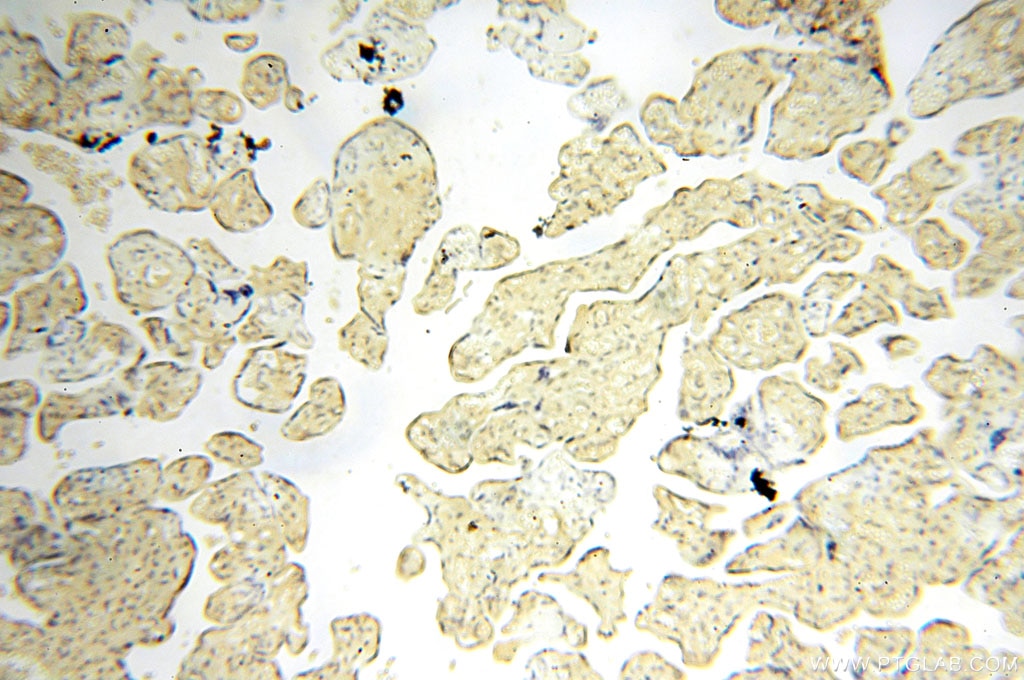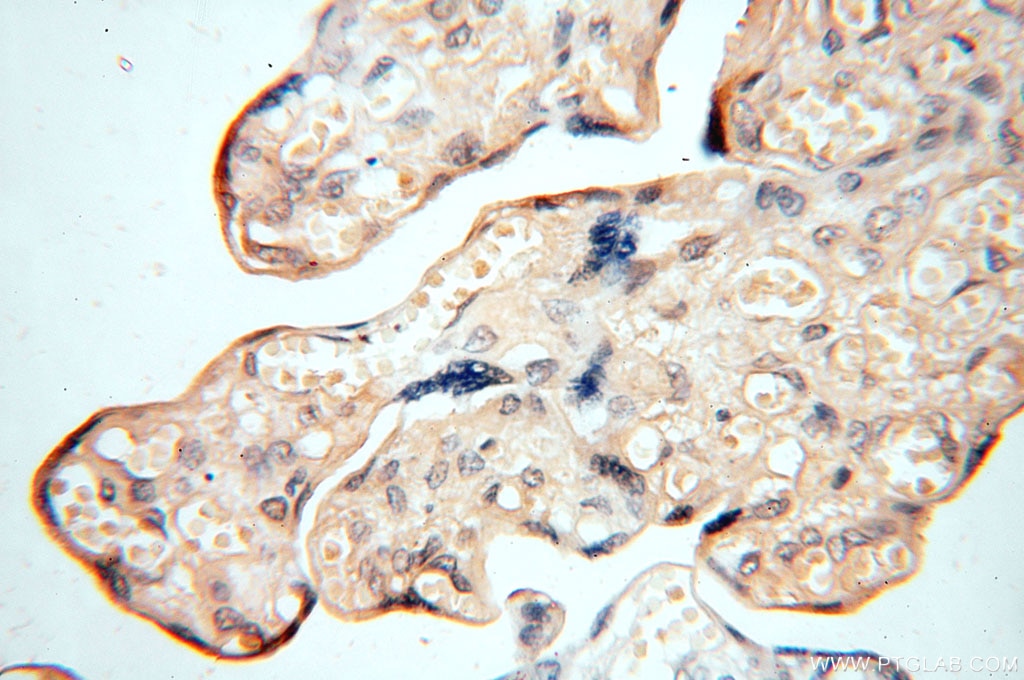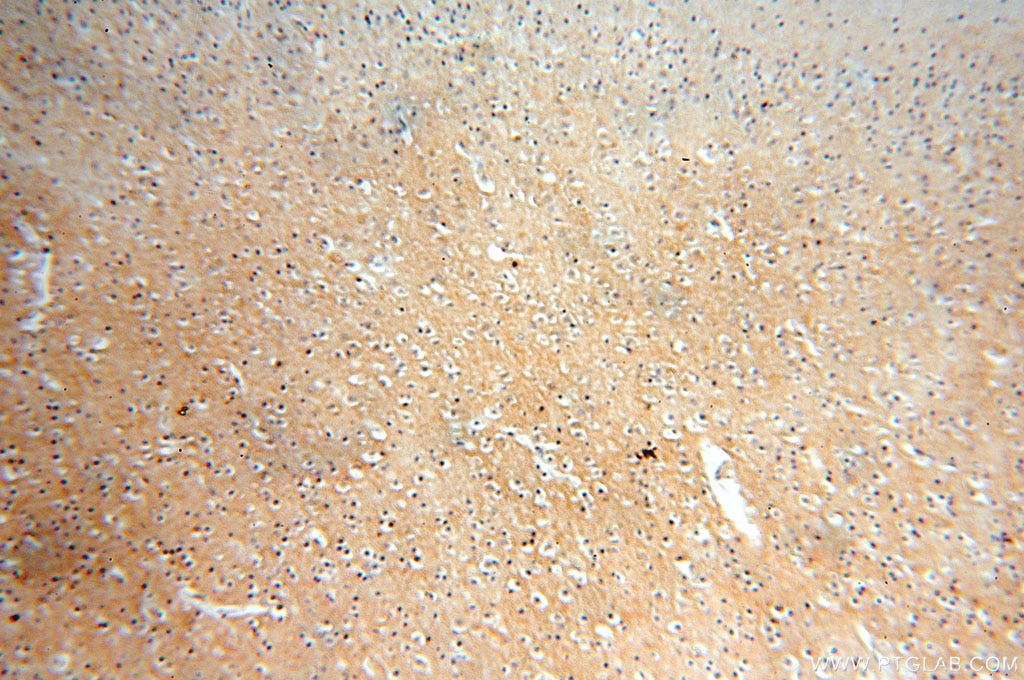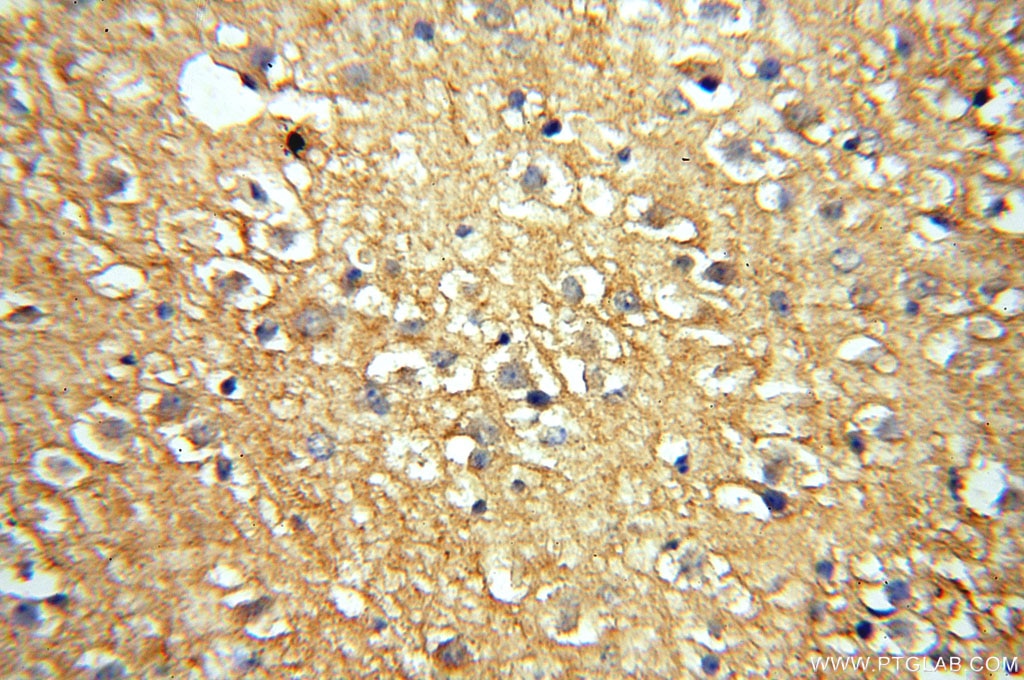- Phare
- Validé par KD/KO
Anticorps Polyclonal de lapin anti-RTN1 (Isoform RTN1-C)
RTN1 (Isoform RTN1-C) Polyclonal Antibody for WB, IHC, ELISA
Hôte / Isotype
Lapin / IgG
Réactivité testée
Humain, rat, souris
Applications
WB, IF, IHC, ELISA
Conjugaison
Non conjugué
N° de cat : 15048-1-AP
Synonymes
Galerie de données de validation
Applications testées
| Résultats positifs en WB | tissu cérébral de souris, tissu cérébral de rat, tissu cérébral humain |
| Résultats positifs en IHC | tissu de cervelet de souris, tissu cérébral de souris, tissu cérébral humain, tissu placentaire humain il est suggéré de démasquer l'antigène avec un tampon de TE buffer pH 9.0; (*) À défaut, 'le démasquage de l'antigène peut être 'effectué avec un tampon citrate pH 6,0. |
Dilution recommandée
| Application | Dilution |
|---|---|
| Western Blot (WB) | WB : 1:500-1:4000 |
| Immunohistochimie (IHC) | IHC : 1:50-1:500 |
| It is recommended that this reagent should be titrated in each testing system to obtain optimal results. | |
| Sample-dependent, check data in validation data gallery | |
Applications publiées
| KD/KO | See 2 publications below |
| WB | See 6 publications below |
| IF | See 1 publications below |
Informations sur le produit
15048-1-AP cible RTN1 (Isoform RTN1-C) dans les applications de WB, IF, IHC, ELISA et montre une réactivité avec des échantillons Humain, rat, souris
| Réactivité | Humain, rat, souris |
| Réactivité citée | rat, Humain, souris |
| Hôte / Isotype | Lapin / IgG |
| Clonalité | Polyclonal |
| Type | Anticorps |
| Immunogène | RTN1 (Isoform RTN1-C) Protéine recombinante Ag7031 |
| Nom complet | reticulon 1 |
| Masse moléculaire calculée | 84 kDa, 39 kDa, 24 kDa |
| Poids moléculaire observé | 23 kDa |
| Numéro d’acquisition GenBank | BC000314 |
| Symbole du gène | RTN1-C |
| Identification du gène (NCBI) | 6252 |
| Conjugaison | Non conjugué |
| Forme | Liquide |
| Méthode de purification | Purification par affinité contre l'antigène |
| Tampon de stockage | PBS with 0.02% sodium azide and 50% glycerol |
| Conditions de stockage | Stocker à -20°C. Stable pendant un an après l'expédition. L'aliquotage n'est pas nécessaire pour le stockage à -20oC Les 20ul contiennent 0,1% de BSA. |
Informations générales
Reticulon (RTN) proteins are a group of membrane-bound proteins that largely reside in endoplasmic reticulum (ER) (PMID: 18177508). Reticulon proteins share a common sequence feature, the reticulon homology domain (RHD). They are involved in shaping the tubular endoplasmic reticulum network, membrane trafficking, inhibition of axonal growth, and apoptosis (PMID: 24218324). Four mammalian reticulons (RTN1-4) exist. Human RTN1 (also known as NSP) gene is expressed predominantly in neuroendocrine tissues, and produces three isoforms termed RTN1-A (NSP-A), RTN1-B (NSP-B), and RTN1-C (NSP-C). This antibody is raised against the full-length protein of human RTN1-C.
Protocole
| Product Specific Protocols | |
|---|---|
| WB protocol for RTN1 (Isoform RTN1-C) antibody 15048-1-AP | Download protocol |
| IHC protocol for RTN1 (Isoform RTN1-C) antibody 15048-1-AP | Download protocol |
| Standard Protocols | |
|---|---|
| Click here to view our Standard Protocols |
Publications
| Species | Application | Title |
|---|---|---|
Cell Death Dis RTN1-C mediates cerebral ischemia/reperfusion injury via ER stress and mitochondria-associated apoptosis pathways.
| ||
Hum Mol Genet Transverse endoplasmic reticulum expansion in hereditary spastic paraplegia corticospinal axons. | ||
Acta Biochim Biophys Sin (Shanghai) RTN1-C mediates cerebral ischemia/reperfusion injury via modulating autophagy.
| ||
NPJ Parkinsons Dis Deficiency of Perry syndrome-associated p150Glued in midbrain dopaminergic neurons leads to progressive neurodegeneration and endoplasmic reticulum abnormalities | ||
Brain Res Bull RTN1-C is involved in high glucose-aggravated neuronal cell subjected to oxygen-glucose deprivation and reoxygenation injury via endoplasmic reticulum stress. |
